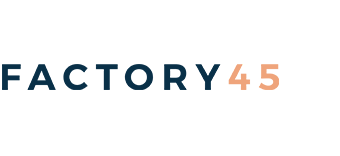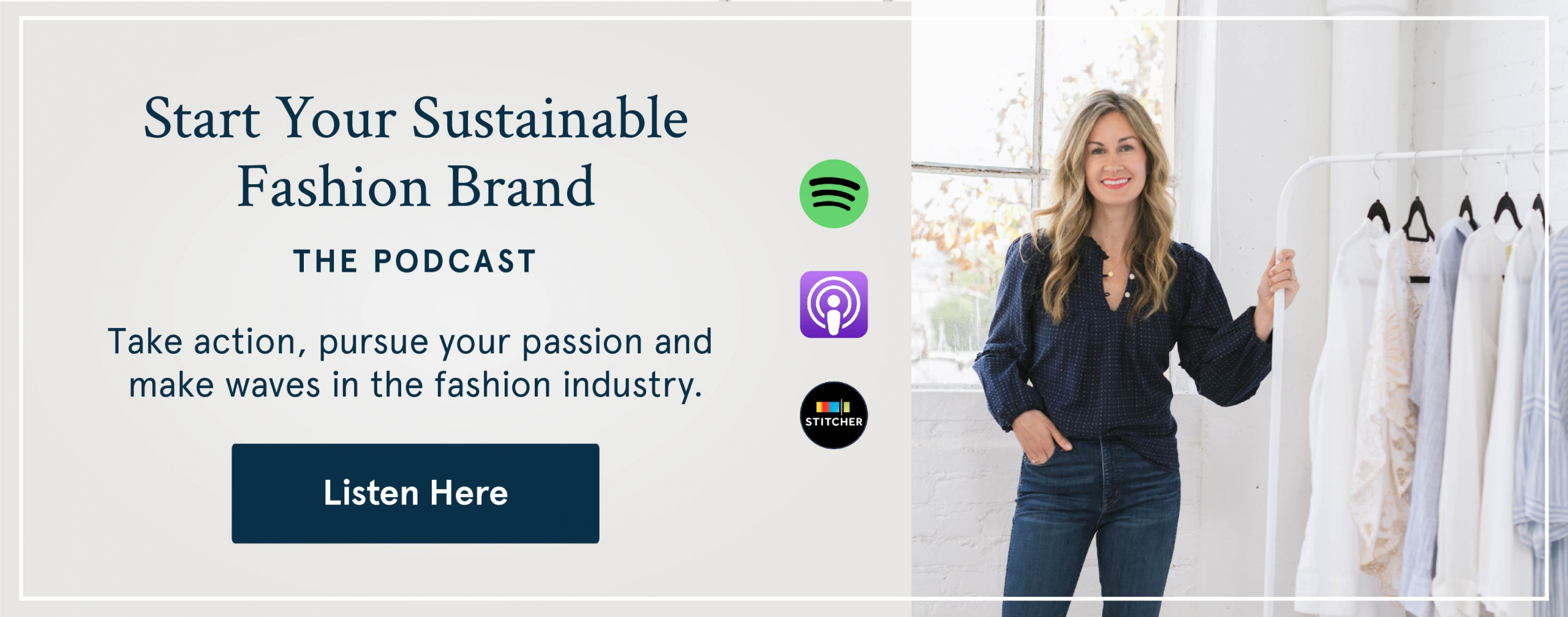Podcast Ep. 36: How Much Does it Cost to Start a Sustainable Fashion Brand?
Listen on Apple Podcasts | Listen on Spotify
If, right now, you Googled “How much does it cost to start a fashion brand” a bunch of articles would pop up giving you a range between 500 and 50,000 dollars. Which isn’t all that helpful if you’re trying to put a budget together or plan ahead. While yes, it’s true that startup costs vary greatly depending on what type of garments you’re making, how much experience you have and who you’re working with, in this episode I’m going to attempt to narrow down that range so you have a better idea of what to expect.
Resources mentioned in this episode:
Should You Quit Your Day Job to Start Your Fashion Brand
TRANSCRIPT
How Much Does it Cost to Start a Sustainable Fashion Brand?
If, right now, you Googled “How much does it cost to start a fashion brand” a bunch of articles would pop up giving you a range between $500 and $50,000 dollars. Which isn’t all that helpful if you’re trying to put a budget together or plan ahead. While yes, it’s true that startup costs vary greatly depending on what type of garments you’re making, how much experience you have and who you’re working with, in this episode I’m going to attempt to narrow down that range so you have a better idea of what to expect.
For the purposes of this episode, I’m going to base my cost breakdown on the information I have available to me – and that’s through the firsthand accounts of the entrepreneurs in Factory45 who are all currently starting sustainable fashion brands.
Inside our private community and live classes, I regularly see them share and offer price comparisons on the costs of samples, patterns, graphic designers, photographers, videographers and other startup expenses.
As a side note, that’s another huge value-add in being part of a program and community like Factory45. What you save by doing peer to peer price comparisons and getting personal referrals can pay back the tuition fees of the program alone.
So, let’s start with some of the specific expenses you’ll want to consider when starting your brand. Again, I’m basing this off of Factory45 and the specific system that I teach you to launch your brand – so there are going to be some expenses missing that other consultants, programs, educators or even Google would tell you to pay for that I don’t. Our goal at Factory45 is to help you get to market in the most efficient, streamlined and cost-effective way possible and that means not spending money on things that don’t help you get closer to launch.
For example, a lawyer would tell you to pay a couple of hundreds of dollars for a trademark. Of course, I’m not a lawyer but I would tell you not to spend your startup cash on legal expenses in the beginning. For the same reasons that I didn’t trademark Factory45 until I was four years into business. But I digress…
Here are the things you can expect to pay some amount of money for – I’ll go through the list in chronological order and then I’ll break down each item to give you a price you can expect to pay.
Fabric swatches
Landing page
Patterns & samples
Email marketing platform
Photography
Videography
That’s six things – and the last two (photos and video) can typically be bundled into one expense. You’ll notice that I did not mention bulk fabric, manufacturing costs, packaging, patents or trademarks, or a full website. And I’ll explain why in a minute.
But first, what can you expect to pay for these six expenses and why are they the most important things to spend money on?
We start with fabric swatches – this is the first real expense that most Factory45 entrepreneurs have to pay for and it’s when things start to feel more real. The good news is, we’re typically not talking about a huge amount of money. Depending on how many fabric swatches you want to look at, you’re usually just paying the price of shipping. There are, of course, outlier situations – like unexpected overseas shipping costs, creating a custom fabric or choosing to do textile printing – but in most cases, our entrepreneurs generally pay less than $100 in the fabric sourcing process of looking at swatches.
The next expense is a Landing page – and I’m not talking about the cost of hiring a web designer to create your landing page for you. I’m referring to the cost of paying for your domain or URL and the monthly fee to pay your website host. In Factory45, we teach everyone how to create their own landing pages on either Squarespace or Shopify and the price you’ll pay for hosting on either of those platforms ranges from $16/month to $29/month. Between the Factory45 tutorials and workshops, and free how-to videos on YouTube even the least tech savvy person is generally able to create a basic landing page to start building an interest list for their brand.
The third expense is patterns and samples – this is when things get real and should be the most significant startup cost you encounter. No matter how you launch your fashion brand, whether it’s out of fashion school, through a program like Factory45, with the help of a private consultant or on your own, you must have patterns and samples. There’s no way around it. And generally speaking, for patterns and samples, you’re going to pay between $250-$1,000 per style. With the help of 3D sampling, our spec sheet templates and learning common mistakes to avoid, there is a way to stay on the lower end of that range but when you think about hiring a pattern/samplemaker you generally don’t want to just go for the cheapest option.
The fourth expense is upgrading your email provider – so, for a time, you may be able to get away with the free plan of your email marketing platform, like Mailchimp, ActiveCampaign, Klaviyo or something else. But eventually you’ll get to a point when you’re going to want to create email automations, like a welcome series, to nurture your email list. This is something I teach and encourage – in addition to an Abandoned Cart sequence – in Module 4 of Factory45. You may also have to upgrade and pay once you reach a certain level of email subscribers. Mailchimp bumps up from free to $11/month when you get to 50,000 subscribers, but you’ll likely upgrade sooner than that to access some of those next level email marketing options.
The final expense is one I’m going to bundle together because you can generally do both at the same time – and that’s your photography and videography. This is another one of those nonnegotiables like patterns and samples – if you plan to launch your brand online, then you need photos and video content of your garments or product. You’ll want product photos against a white background, as well as lookbook or lifestyle photos and you’ll want a 1-2 minute feature video (especially if you’re launching with a crowdfunding campaign) as well as 60 second, 30 second and 10 second video clips for social media. Again, you can typically shoot all of this in one photoshoot and make sure to get multiple quotes from different freelancers, agencies and professionals. You’ll find a range of less than $1,000 if you’re able to do a trade, negotiate or give away product/samples all the way up to $10,000 for a full-day shoot including multiple models, looks and both video and photography. Most of the entrepreneurs in Factory45 pay around $3,000 or less for their first brand shoot.
So those are the six expenses you can expect to pay in startup costs.
Let’s total up the averages – so we’ll say $100 for the shipping of fabric swatches, we’ll say $240 for a year for hosting your landing page, let’s say you do three styles and it’s $500/each for patterns and samples so that’s $1500, we’ll say $132 for the year for your email marketing upgraded plan and $3,000 for your photo / video shoot. That comes out to $4,972 which we’ll round up to $5,000 for the year. Which means you essentially need an extra $416.67 per month in disposable income if you want to launch your brand within 12 months. And again, that’s considering the simplified averages of these costs – not the low end or the high end.
And by no means, do I want to simplify this. $416/month is not a small amount of money, but it’s probably less than you thought it would be. Because of course it takes money to start any type of business – a product-based business costs more than starting a digital or online business – but as I mentioned a few minutes ago, the startup expenses you’re planning for do not have to include things like bulk fabric or manufacturing costs that can run upwards of 20 grand.
Why? Because of the launch strategy I teach in Factory45 that focuses on pre-selling. This is the best, least risky and most efficient way to launch a fashion brand in 2022 and the years to come. And I have a free hour-long workshop that explains this more – I’ll link to it in the show notes below.
The general gist is this, you do not (and should not) use your own money to go into production of your brand, product or first collection – there is a way to test the market and ensure that you have customers first before you create any inventory. And in doing this, your customers will pay for your production run for you.
So when you think about starting your own fashion or accessories brand, or even just launching one signature product, can you find $416 per month to put towards your business? Can you cut back on the number of times you go out for dinner and drinks? Can you cancel a few monthly subscriptions that you don’t use? Can you scale back your Postmates or UberEats frequency? Can you put a moratorium on buying new clothes? If you’re fortunate enough to even be considering starting a business, then chances are there is room to find startup capital in your monthly income. And if you’re serious about starting your own brand, then what I would recommend doing right now is putting together a monthly budget and seeing where you can squeeze out some startup capital from your disposable income.
I would never recommend risking your livelihood, rent money, grocery budget or family’s wellbeing to start your own fashion brand because the truth is, it takes time. It takes months to years, it is not a get rich quick scheme and anyone who says it is, is not being honest with you. But if there’s a way to reorganize your finances, move things around and start little by little each month, then you’re setting yourself up for the long game. And that’s what separates the dreamers from the doers.
If you thought this episode was helpful and you’re considering a pre-sale to launch your fashion or accessories brand, this is a reminder to sign up for my free workshop on How to Raise Money for Your Fashion Brand – without investors, without taking out a loan and without risking your own savings. Go to factory45.co/sustainable-fashion-event or click the link in the description below. Thanks for listening!



